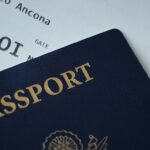Opening a bank account in Canada is usually a quick and simple process. Whether you are a Canadian citizen, a permanent resident, a temporary resident, or even a visitor, you can set up your own account in minutes. You will be shuffling through various types of accounts, such as chequing accounts, savings accounts, and newcomer banking packages. You can apply online, by phone, or visit a branch.
As someone who has never opened a bank account in this financial center, it is normal to feel overwhelmed. There are many hoops to navigate, such as documentation, application, and choosing the right bank. But we are here to help.
In this article, we’ll dive into:
The Canadian Banking System

The cornerstone of Canada’s banking system is its regulatory framework, which is supervised by the Office of the Superintendent of Financial Institutions (OSFI) and the Bank of Canada. This includes over 65,000 ATMs where you can withdraw money without paying fees. You can also use them to transfer money, pay taxes, or bills.
Currently, there are over 80 banks in Canada. The country’s modern banking system is divided into three main categories: domestic banks, subsidiaries of foreign banks, and full-service branches of foreign banks.
The presence of international banks, either through subsidiaries or branches, further enriches Canada’s financial landscape. These international banks include the HSBC Bank Canada, Citibank Canada, and ICICI Bank Canada. Major Canadian banks like Scotiabank and Royal Bank of Canada (RBC) have a significant international presence.
Many Americans are moving to Canada to expand their business and diversify their investments. Whether you’re a student, worker, or someone considering Canadian citizenship through investment programs (which typically involve gaining permanent residency first), opening a Canadian bank account is one of your very first and most important financial steps.
How to open a bank account in Canada?
To open a Canadian bank account, you can go to a bank branch and bring valid identification and possibly additional documents, based on your residency status. You will need two pieces of ID, one of which should have your full name and birthdate. Canadian citizens, permanent residents, and temporary residents can provide a Social Insurance Number (SIN) for tax purposes, investment income, and earn interest.
Here is a breakdown:
Meet the qualifying criteria
You must be:
- The sole applicant (unless it’s a joint account)
- Living in Canada with a valid Canadian address
- At least 13 years old (or 14 if you’re in Quebec)
- Bringing official photo ID (passport or driver’s license)
Choose your preferred Canadian bank
To choose the right Canadian financial institution, compare monthly fee prices, check for everyday banking services, interest rates on savings accounts, and ATM locations. Also, consider the monthly Interac e-transfer fees and whether it has unlimited transactions.
Collect the necessary documents
To open a bank account in Canada, you’ll need two IDs, such as a valid passport, driving license, or another form of personal identification. You may need to provide a Social Insurance Number (SIN) and address details. You can set up your new account at the bank, on their website, or over the phone.
Select the type of bank account you want to open
You can choose various bank accounts, such as chequing accounts, savings accounts, and special programs. You can even open a separate business account to manage your finances and have multiple accounts based on your needs.
Sign the application forms
You must sign a signature card, an account agreement, and other documents based on the account type. You can often use online statements to set up a bank account.
Activate mobile and online banking
Visit your bank’s website and register your bank account online. For that, you will need a debit card or a credit card number. After creating a username and password, download the bank’s official app on your smartphone and set up mobile banking.
Documents Required to Open a Canadian Bank Account
To meet the eligibility criteria, the primary cardholder must provide proof of address and identity. Here is a list of some of the documents to open a bank account in Canada.

- Valid Passport
- Driver’s license
- Temporary resident permit
- Work visa
- Permanent resident card
- NEXUS Card
Proof of address:
- Lease agreement
- Utility bills
- Credit card statements
- Telephone bills
- Employer letter
- Educational institution letter
- Government tax assessments
- Mortgage statements
- Property tax receipt
Opening a Bank Account in Canada for Non-Residents
As a non-resident in Canada, you can open a bank account in person at a local branch or set up an account online. Here are the steps to consider:
In-person
You can open a bank account the old-fashioned way, by talking to a representative face-to-face. To start:
- Choose a bank that offers non-resident services, such as Scotiabank, TD Bank, Royal Bank of Canada, or BMO Bank.
- Talk to a bank representative, ask them any bank account questions, and let them know you want to set up a non-resident account.
- Provide the bank with the necessary documents.
- Provide your signature on all application forms.
- Wait for processing, which in-person can take 30 minutes, especially if you have all the documents.
- Once approved, you may need to provide a minimum direct deposit for some types of accounts.
Set up a bank account online
Digital banking divisions, like Simplii Financial, Tangerine, can help you open an account in Canada remotely. To start:
- Visit the official bank website and create a bank account online.
- Fill out the application forms for online banking.
- Upload digital copies of your passport, utility bills, mortgage statements, or any other documents.
- Wait for processing, which can take from a couple of minutes to a few business days.
- Download the mobile banking app.
How much does it cost to open a bank account in Canada?
You can open personal bank accounts in Canada for free. The cost comes from paying monthly fees for your financial account and any other services you may use. You can spend three to four Canadian dollars per month for a low-cost account at BMO, Laurentian Bank, and TD Canada Trust.
For example, the best bank accounts at most major Canadian banks (Royal Bank of Canada, Toronto Dominion Bank, Scotiabank, and Canadian Imperial Bank of Commerce (CIBC) offer specialized “Newcomer to Canada” banking packages. They provide lower or waived monthly fees for a period, which can help you save money on a new chequing account.
Bank account costs at a glance | |
Monthly fees | $3 to $30 or more |
Transaction fees | $1.00 to $1.50 per transaction |
ATM fees | $1.50 to $2.50 (network access fee) $1.50 to $5 (convenience fee) |
Foreign currency conversion fees | 2.5 percent of the transaction value |
Types of Bank Accounts in Canada
There are different types of bank accounts in Canada:
- Chequing accounts: You can use them for everyday banking, like spending, bill payments, and withdrawals. They often have monthly fees, but you can sometimes waive these by maintaining a minimum balance.
- Savings accounts: You can use them to save money and earn interest. However, savings accounts usually have limits on free transactions.
- Registered and long-term savings accounts: Accounts such as Registered Retirement Savings Plan (RRSP), Tax-Free Savings Account (TFSA), and First Home Savings Account (FHSA) are for long-term savings, often with tax benefits. Contributions can reduce your taxable income so that you can save money for your future (like retirement or a first home).
- Specialized accounts: These include student accounts, newcomer accounts, and joint accounts. Newcomer programs often waive fees for a period, allow unlimited transactions, and help with credit building. Students enjoy lower monthly fees, while joint accounts allow two or more people to share the same account and store mutual funds.
- Business bank accounts: These are separate accounts for a registered business. You can use them for record-keeping, tax compliance, and business credit.
The Best Banks in Canada
Bank name | Tier 1A capital ratio in percentage | Total asset value (in dollars) | Return on Assets (RoA) percentage | |
1 | Royal Bank of Canada | 14.6 | 1.511 trillion | 0.8 |
2 | Toronto-Dominion Bank | 14.8 | 2.046 trillion | 0.4 |
3 | Bank of Nova Scotia | N/A | 1.412 trillion | 0.8 |
4 | Bank of Montreal | 13.27 | 4 trillion | 1.08 |
5 | Canadian Imperial Bank of Commerce (CIBC) | 14.8 | 746.88 billion | 0.71 |
6 | Desjardins Group | 21.0 | 464. 7 billion | N/A |
7 | National Bank of Canada | N/A | 333.83 billion | 0.82 |
8 | EQ Bank (Equitable Bank) | 13.2 | 71.5 billion | 0.13 |
9 | Laurentian Bank of Canada | 10.9 | 48.8 billion | -0.01 |
10 | Canadian Western Bank | 11.9 | 43.1 billion | 0.7 |
How Can Global Citizen Solutions Help You?
Global Citizen Solutions is a boutique investment migration consultancy firm focused on finding the right residency or citizenship by investment program for individuals wishing to secure their future and become global citizens. With offices in Portugal, the United Kingdom, Hong Kong, and Brazil, our multilingual team guides individuals and families from start to finish, providing expert advice considering freedom, mobility, taxation, and security.
- We have helped hundreds of clients from 35+ countries in all the top residency by investment and citizenship by investment programs. With an in-depth and comprehensive understanding of the area, we provide our clients with solid guidance.
- Our team has never had a case rejected. Our 100 percent approval rate sets us apart from our competitors and guarantees that you can expect a successful application.
- Our transparent pricing covers all the processes from opening your bank account, document certification, and legal due diligence to investment and submission. As there is one fee for the entire process, you can be confident that you will not face any hidden costs later.
- All data is stored within a GDPR-compliant database on a secure SSL-encrypted server. You can be safe knowing that your personal data is treated with the utmost security.
- Global Citizen Solutions provides an all-encompassing solution. Our support can continue even after you receive your passport. We offer additional services such as company incorporation, Trusts, and Foundations formation.
- The BeGlobal Onboarding System® allows you to access the status of your application every step of the way, something that sets us apart from our competitors.

Frequently Asked Questions About Opening a Bank Account in Canada
Can an American open a bank account in Canada?
Yes, US citizens can open a bank account in Canada before they move there. However, some features might not be available until you arrive in the country with a legal immigrant status. For example, you won’t get full access to loans, mortgages, lines of credit, or Canadian tax advantages, but you can pay the bills, manage your transactions, and keep an emergency fund.
What are the requirements to open a bank account in Canada?
Required documents include a passport, driver’s license, proof of address (tax assessments, eligible credit card statements, rental contracts), and a signed application form. You must be 13 or older (14 in Quebec) and the sole applicant.
Can I open a bank account in Canada online?
Yes, many Canadian banks let you open a bank account online. You call the bank or set it up digitally. You must provide personal details and verify your identity. The entire process can take a few business days.
Do I need a Canadian address to open a bank account in Canada?
No, you don’t need to live in Canada to open a bank account. You can do it remotely. But you must provide the bank with proof of address from a foreign country. You can use documents, such as lease contracts, insurance documents, mortgage statements, tax records, etc.
How long does it take to open a bank account in Canada?
You submit the documents right away and receive an email after the bank reviews the information. Standard processing for account opening online is three to five business days. Applying in person can take 30 minutes to an hour, depending on the queue. You will receive your physical debit card in seven to ten business days.
What is the minimum deposit required to open a Canadian bank account?
Most banks don’t ask you to deposit money when you open your first account. You can do it for free at major banks (like RBC, TD, Scotiabank, BMO, CIBC, National Bank of Canada, Laurentian Bank) and online-only banks (like Tangerine, Simplii Financial, EQ Bank).
Can I open a bank account in Canada if I'm bankrupt?
Yes, you can set up a bank account even if you are bankrupt, without a job, or can’t afford to deposit money right away. Your credit history doesn’t prevent you from creating a bank account balance online. Banks only need to verify your identity for basic account opening.
How to get the best bank account in Canada?
Getting a bank account in Canada and choosing a financial institution depends on your needs and budget. It is best to find accounts with monthly fee rebates, ideally offering foreign currency options, and lower transaction fees. Look for pre-authorized payments and other services that align with your needs, whether for work, travel, or international payments.
What is an Advantage Banking Account?
The Advantage Banking Account is a premium chequing account available at many Canadian banks. People can find this bank account very useful due to services such as no minimum monthly bank account balance requirement, leisure and travel discounts, and other complimentary services.
How does online banking in Canada benefit my foreign currency accounts?
Through online banking, you can easily monitor and manage your foreign currency accounts, no matter where you live. Plus, your debit or credit card, for example, one backed by Visa International Service Association, allows you to spend directly from your foreign currency debit account or avoid conversion fees when using a credit card.


